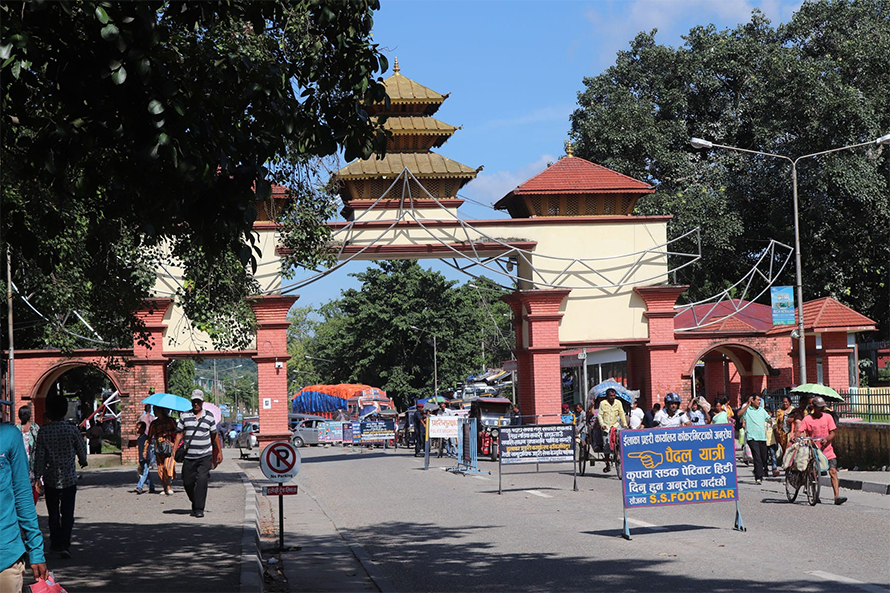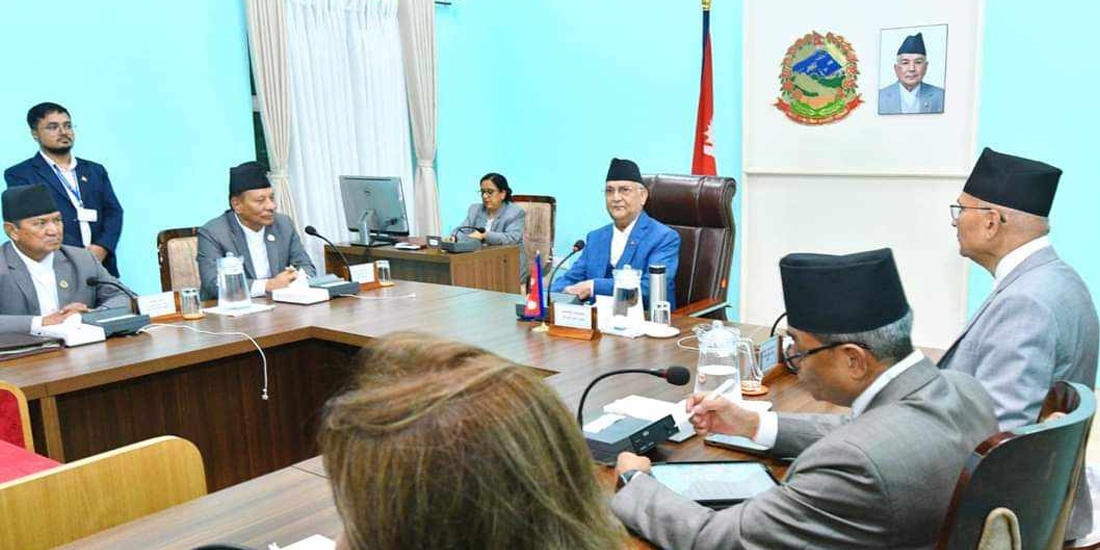Shikaribas Corridor: Connecting Tri-Boundary for Wildlife Movement
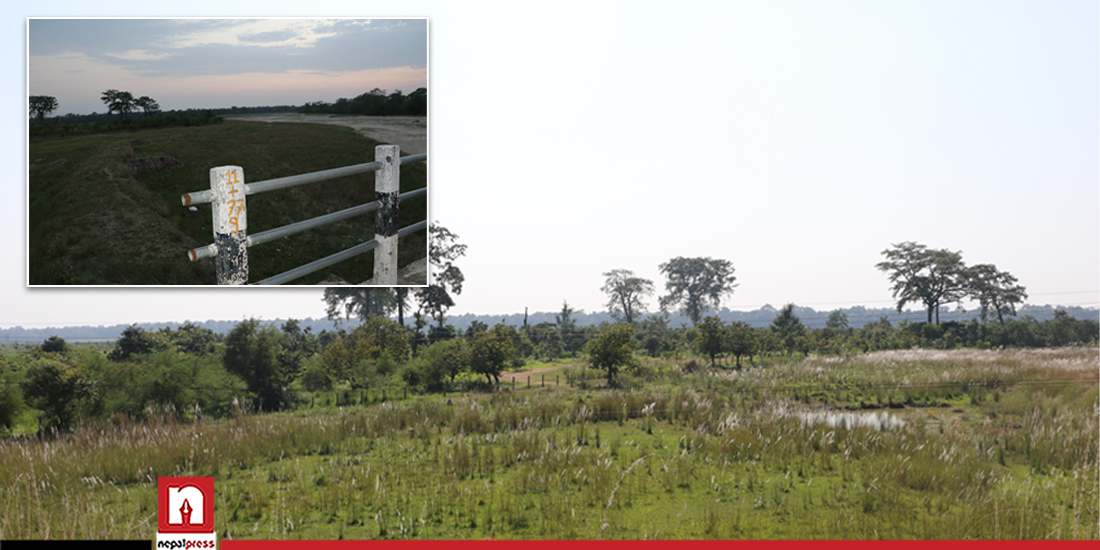
A productive forest in Nepal’s southern plain, popularly called Terai, is known to be the prime habitat of large fauna like tigers, rhinos, and elephants. Shikaribas is a parcel of land located in Central Terai, Nepal, which serves as a critical corridor connecting Parsa National Park (PNP) and Chitwan National Park (CNP) in Nepal, as well as Valmiki Tiger Reserve (VTR) in Bihar, India. It is known for its rich presence of forest and wildlife. The total area of this land piece (often called a biological corridor by conservationists) is 3.26 sq km.

The name ‘Shikaribas’ is derived from the river called Shikaribas, which runs through the corridor and serves as the administrative boundary between Chitwan National Park and Parsa National Park.
The corridor serves as an important migratory route for different wildlife species including endangered and threatened species Royal Bengal Tiger, Asian Elephant, One-horned Rhinoceros, and Sloth Bear. This corridor plays a crucial role in supporting a diverse range of flora and fauna, maintaining ecosystem biodiversity, and ensuring the long-term health and viability of various species populations. It serves as an important ecological bridge connecting three protected areas and facilitates the safe and free movement of wildlife across fragmented landscapes.
Since this corridor lies between the human settlement there is a deep interconnection between the natural environment and the local communities. This region is home to the indigenous people called Tharus. However, in the late 1950s to the 1960s, large-scale migration from the hilly regions resulted in the conversion of forest land into human settlements and agricultural land. This corridor is also home to several important Hindu temples and pilgrimage sites which have significant cultural and religious significance. This region has a rich tradition of folk music and dance, these cultural practices are often performed during festivals and celebrations and serve to connect with nature and celebrate the community’s unique cultural heritage which attracts visitors from all over the region. Many local communities rely on the tourism industry for their livelihood.
Shikaribas corridor functions as the link between fragmented forests and land and protects natural habitats.
Research has been carried out in the complex for the diversity, distribution, and density of tigers and other large mammals as well as the impact of human activities on the complex. Conservation work has focused on habitat restoration and management, community-based conservation, and sustainable livelihoods for local communities. Findings include the importance of maintaining ecological connectivity and managing human activities to preserve natural habitats and biodiversity. These three protected areas approximately hold 141+ tigers, 697+ Rhinos, and 50+ migrating Elephants (Thapa, K., Tuladhar, S. (Eds.) 2021. Connecting Corridors). One significant conservation initiative is the Terai Arc Landscape (TAL) Program, which aims to protect and restore the ecological connectivity of the region by creating a network of protected areas and community forests.
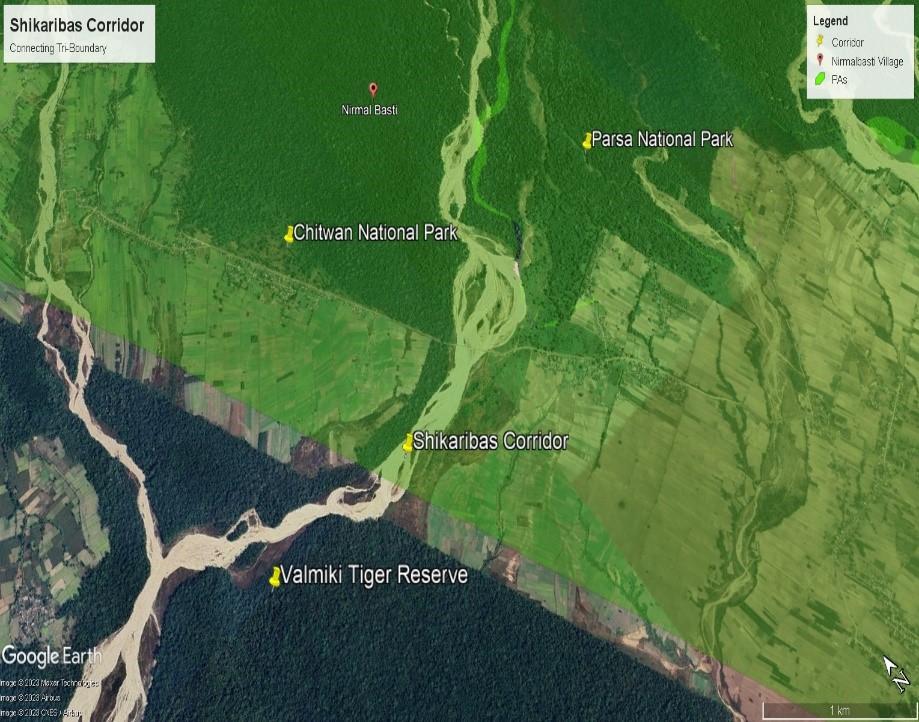
This corridor is threatened by habitat fragmentation due to human activities on both sides of the corridor. Human settlements and agricultural lands on both sides directly contribute to human-wildlife conflict and hinder wildlife populations, gene flow, and genetic diversity, increasing the risk of inbreeding. Additionally, there is a postal highway over the Shikaribas corridor and a bridge used by wildlife as an underpass. However, the ongoing expansion of the highway at different sites has resulted in increased traffic volume, leading to further human-wildlife conflict. As this area was encroached on in the past, there is also a high chance of encroachment in the present which affects habitat connectivity and may impact severely the safe movement of wildlife across the protected areas. As it is in the Churia foothill, there is a major problem of droughts and slow vegetation growth in the area, which can further exacerbate conflicts with elephants, tigers, and other large mammals. Crop damage, livestock predation, and human fatalities due to those conflicts often result in retaliatory killing of wildlife.
Poaching is another issue in this corridor, particularly for meat, resulting in the reduction of prey species. Open borders between wildlife and human settlement are also major challenges. Since most of the people are under poverty marginalized, and forest dependent. it is hard to convince them about the importance of corridors and connectivity for the long-term impact to minimize human-wildlife conflict. The majority of local people’s livelihood depends on nearby forests ranging livestock rearing, and collection of fodder which results in high pressure in forest and wildlife habitat.
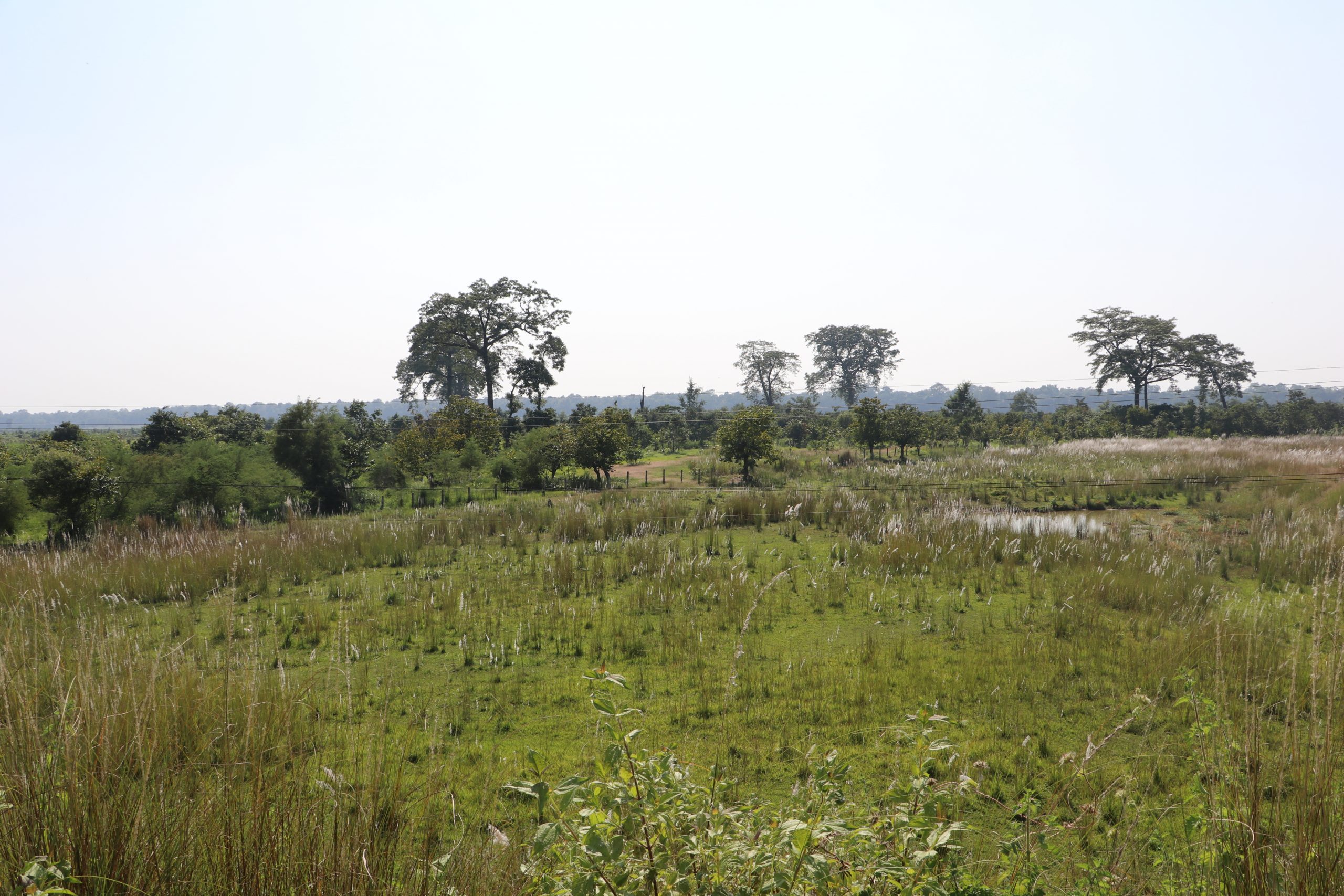
As its name is “Shikaribas”, it is the area where criminals and hunters hide and is considered one of the conflicted areas not only between human-wildlife but also between two nations people. The proposed corridor passes through privately owned land, which may pose challenges in terms of land acquisition, land-use conflicts, and local opposition. Parsa National Park in collaboration with the Local government, local communities, and conservation partners also helps to forest area land from encroachers, restore degraded habitats, and establish community-based conservation initiatives. One of the key challenges associated with this corridor is the need to balance conservation with the needs of local communities who depend on natural resources for their livelihoods.
Collaboration among government, conservation partners, and local communities, which is also seen in the past, can drive positive change in the long-term sustainability of the corridor. Community awareness must be done properly for understanding the importance of this corridor of biological importance not only in Nepal, and India but also by using transboundary cooperation conservation tactics. As this corridor has a connection of tri boundary, there is a good probability of eco-tourism from which local people get opportunities for generating income and employment for local communities. As there is a diversity of wildlife dispersal in this area, human-wildlife mitigation measures should be applied for minimizing the potential risk of human-wildlife conflict in the area. This could include establishing a Human-Wildlife Conflict Fund to assist those affected by wild animals, as well as implementing proper fencing in the fringe areas of settlements to control livestock movement into the forest and prevent wildlife from entering human settlements where people are more vulnerable.
Due to its location in the foothills of the Churia range, the corridor in Shikaribas is susceptible to droughts. To ensure effective and sustainable management, measures such as establishing wetlands, solar charging bores, and rainwater harvesting can be implemented to meet the water needs of wildlife and promote natural regeneration of forest vegetation. Additionally, regular monitoring by community forest guards in the corridor area is necessary for effective management and conservation efforts.
Regarding the corridor connectivity, the local government, buffer zone, local community, and conservation advocate must be aware of its importance as well as its benefit to the community through ecotourism activities and minimizing human-wildlife conflict and uniting all stakeholders for the sustainable management of the Shikaribas corridor. If the supporting organizations and all stakeholders can cooperate, this can be in the form of model corridor connectivity, and it is necessary to attract the attention of all of us to its protection.
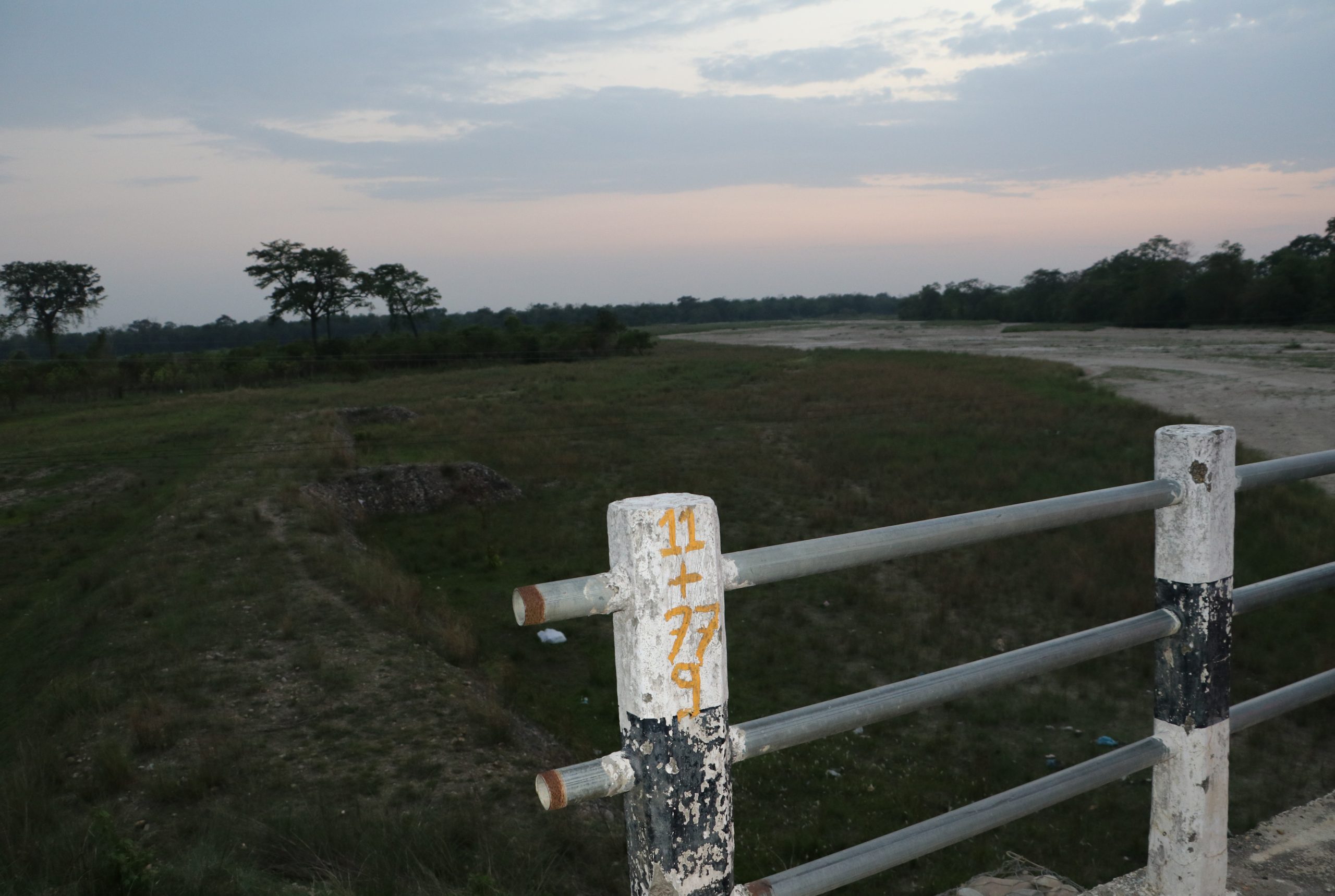
From the Bagmati River in central Nepal to the Mahakali River in the far west of Nepal till the Yamuna River of India, the Terai Arc Landscape is interconnected to one another which is only possible from the various corridors. Therefore, the Shikariwas corridor supports the safe movement, gene flow, and habitat expansion of iconic species such as the Royal Bengal Tiger, Rhinoceros, and Asian Elephant, which are considered rare in the world. Through Landscape and biological corridors, we will always be able to protect such precious wildlife species and pass on their legacy to future generations. Finally, recognizing the importance of multi faceted benefits of corridor connectivity, let us not delay in taking our first steps towards taking multi-dimensional benefit from it.
Poudel is a student of environmental science and a passionate advocate for conservation and protection of the natural world.






